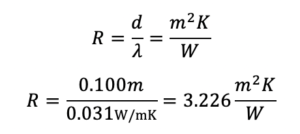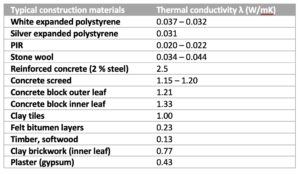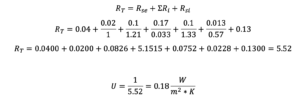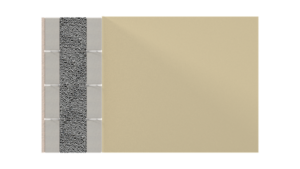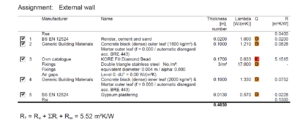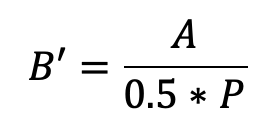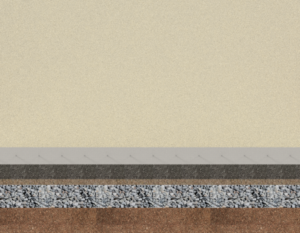
A U-value, also know as thermal transmittance, describes the amount of energy (watts) which can penetrate 1m² of a building component when the temperature difference between both sides is equal to 1oK (Kelvin). Thermally efficient building materials, such as EPS insulation, have low thermal transmittance. This means that only a small amount of heat can pass through that specific component. The calculation method is based on the ISO 6946 standard. To calculate a U-value we need to define the type of the building component (for example, the floor, wall or roof) and calculate the thermal resistance (R) of each material used to build up that component. To calculate this we need to know the thickness and thermal conductivity λ of the building material used.
Heat loss is unwanted especially when we want to design sustainable and thermally efficient buildings. To achieve the best performance, care should be taken to ensure all building components have as low of a U-value as possible.
The thermal transmittance is given by:

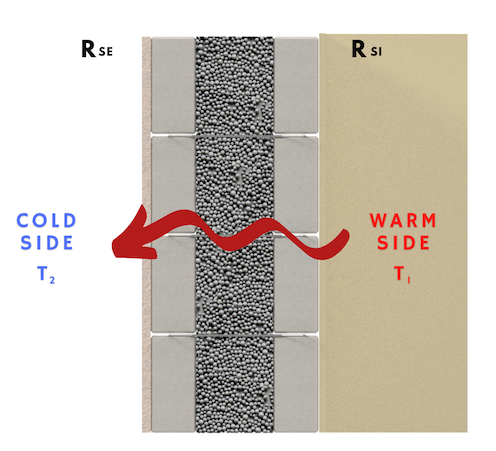
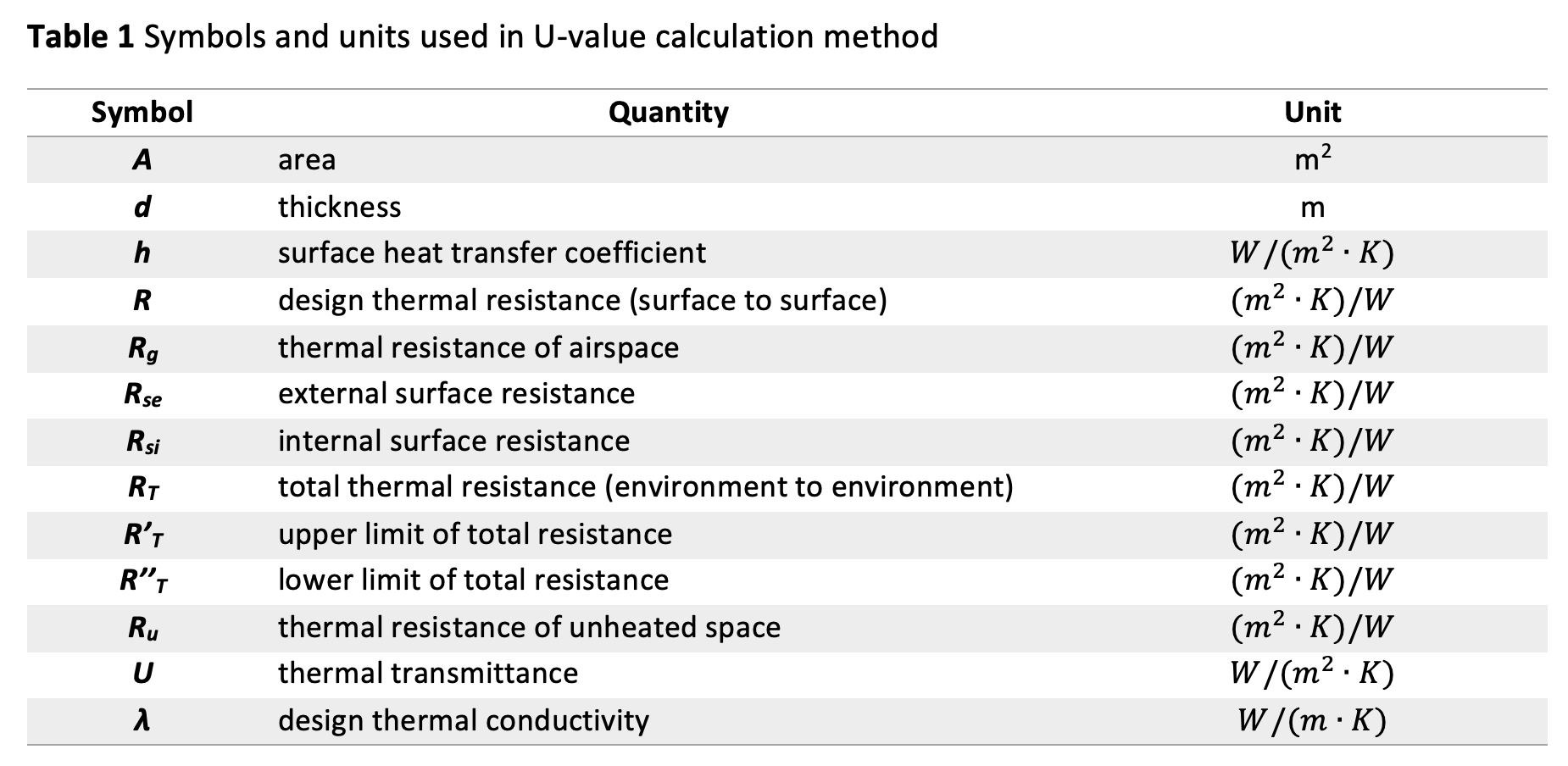
U-value, R-value and λ-value – Definition and Calculation Method
To calculate a U-value, we need to define the component’s build-up and calculate the thermal resistance (R) of each component.
Thermal resistance R is the temperature difference between two defined material surfaces that induces a unit heat flow rate through a unit area. It is often described as the reciprocal of thermal transmittance and can be derived from the thermal conductivity and the thickness of the materials.
In other words, thermal resistance tells us how much heat a material can block from transiting from one to the other side. Insulation materials have a high thermal resistance. For example, KORE Floor EPS 70 Silver board, which is 100mm thick, has a thermal resistance equal to 3.23m2K/W
Thermal resistance of a building component is a summary of resistances of each layer:
Surface resistances Rse & Rsi are insulating values for the thin layers of air at the inner and outer surfaces of the construction. The default values are based on the assignment of the construction and normative values provided in EN ISO 6946. The surface resistance depends on heat flow direction. The defaults are as follows:
Thermal conductivity λ – is the design thermal conductivity of the material, either calculated in accordance with EN 13163 for EPS or obtained from tabulated values. Below are examples of of typical construction materials with thermal conductivity:
U-value Examples for Cavity Walls & Ground Floors
The below are example U-value calculations for cavity wall and floor insulation only. For specific U-value calculations, please contact our technical team directly. The cavity wall calculation below use KORE Fill Diamond bead insulation material. KORE Floor EPS70 Silver boards were used for the ground floor calculation.
Cavity Wall Insulation U-Value Calculation
To calculate total thermal resistance RT of a cavity wall, we need to know:
- Wall build-up which is in this case from external surface:
- Cement and sand render
- Outer leaf concrete block with mortar between the blocks
- KORE Fill Diamond insulation with double triangle stainless steel wall ties
- Inner leaf concrete block with mortar between the blocks
- Gypsum plastering
- Thickness of each layer d (see report)
- Thermal conductivity λ (see report)
- Number of wall ties per 1m2
Once we know the above, we can calculate RT assuming horizontal heat flow:
In the calculation above, the end U-value for the cavity wall is 0.18W/m2K, utilising 170mm of KORE Fill Diamond Cavity Wall Insulation.
Floor Insulation U-Value Calculation
U-value calculations for a floor are very similar to wall calculations, but we need to know a few additional pieces of information. Despite the thermal resistance of the component, we need to calculate B’ characteristic dimensions of the floor defined as the area of the floor divided by half the perimeter:
The floor U-value is calculated according to ISO 13370:2017 – Thermal performance of buildings — Heat transfer via the ground — Calculation methods.
For a floor on the ground, thermal conductivity of the ground is divided into three types:
- Clay or silt
- Sand or gravel
- Homogenous rock
To calculate the U-value for a ground floor, we need to know:
- Floor build-up, which is in this case :
- Reinforced concrete slab
- KORE Floor EPS70 Silver
- Radon barrier
- Thickness of each layer d (see report)
- Thermal conductivity λ (see report)
- Thermal conductivity and type of ground
- Exposed perimeter P
- Floor area measured from inner side of the wall A
- Wall thickness
In the case above, the U-value is calculated as 0.18W/m2K which is achieved by utilising 130mm KORE Floor EPS70 Silver.
Do you need assistance calculating a U-value for your next project? Contact our technical team by clicking the button below for more information.
References:
- ISO 6946 – Building components and building elements – Thermal resistance and thermal transmittance – Calculation method
- Building regulation part L
- ISO 13370:2017 – Thermal performance of buildings — Heat transfer via the ground — Calculation methods
- Brian Anderson, BR 443 Conventions for U-value calculations 2006 edition


